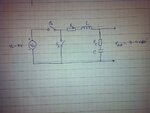prawesh2000
Junior Member level 1
- Joined
- Apr 23, 2012
- Messages
- 17
- Helped
- 1
- Reputation
- 2
- Reaction score
- 1
- Trophy points
- 1,283
- Location
- Ronneby, Sweden
- Activity points
- 1,407
Hello, everyone!
I want to build a dc-dc converter using a microcontroller TIF28027. The specificatons are:
Input voltage: 9 V
Output voltage: 3-4 V
I load: 5 A
Switching frequency: 330 KHz
Ripple current: 10%
Ripple voltage: 5%
But I am pretty confused on where to start...What are the components that will be used? I need to make a model in Simulink and the PCB layout in DipTrace.
Can anyone provide me with step-by-step guide, please!
I want to build a dc-dc converter using a microcontroller TIF28027. The specificatons are:
Input voltage: 9 V
Output voltage: 3-4 V
I load: 5 A
Switching frequency: 330 KHz
Ripple current: 10%
Ripple voltage: 5%
But I am pretty confused on where to start...What are the components that will be used? I need to make a model in Simulink and the PCB layout in DipTrace.
Can anyone provide me with step-by-step guide, please!
